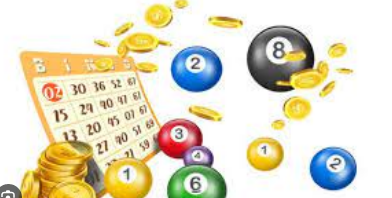A Beginner’s Guide to HK Lottery Prediction

The world of lottery prediction has always fascinated enthusiasts who revel in using logic, data, and probabilities to analyze potential outcomes. For beginners hoping to explore HK lottery prediction, understanding the basics is an exciting first step. This guide provides an introductory look into how data and statistical tools can be used to make informed predictions about hk lottery prediction .
What Is HK Lottery Prediction?
At its core, hk lottery prediction (prediksi togel hk) involves analyzing historical data and applying mathematical models to predict possible outcomes for future lottery draws. While no method can guarantee accurate results, statistical trends and probability offer a lens through which enthusiasts can make educated guesses.
Lottery prediction, at its base, is rooted in the principle of identifying patterns within seemingly random numbers. By examining historical data, trends, frequency of drawn numbers, and other statistical variables, players aim to improve their chances of winning.
Key Factors to Consider
1. Historical Data Analysis
One of the cornerstones of lottery prediction is reviewing past draw results. By identifying recurring numbers or combinations, you may discover patterns that suggest which numbers could reappear. For example, you could focus on “hot numbers” (frequently drawn) or “cold numbers” (rarely drawn) to understand the trend.
Keep in mind that while patterns exist, randomness still plays a significant role. The goal isn’t to eliminate uncertainty but to approach predictions with logical backing.
2. Probability and Number Pool
Lottery games are based on probabilities. Understanding the number pool and how combinations work is crucial for informed predictions. For example, if an HK lottery involves choosing 6 numbers from a pool of 49, the total number of possible combinations is 13,983,816. Your job is to narrow down those combinations based on historical data and trends.
A beginner might find tools like probability calculators useful to visualize their odds and explore best-case scenarios.
3. Balanced Number Selection
Experienced lottery enthusiasts often advocate for balanced number selection. This involves choosing a mix of high and low numbers, as well as odd and even numbers. Analysis shows that such combinations occur more frequently than patterns with all high/low or all odd/even selections.
For example, a selection like 12, 27, 8, 33, 6, and 41 demonstrates a mix of these factors and may statistically align with frequent outcomes.
4. Statistical Software and Tools
Today, several data-driven tools can assist in analyzing lottery trends and creating predictions. Software options can help visualize statistical data, chart trends over time, and pinpoint recurring patterns. Beginners may find free or affordable analytical tools helpful in organizing data for predictions.
Managing Expectations
While lottery prediction provides interesting insights, it’s essential to remember that the lottery is inherently a game of chance. Predictions based on past trends should be viewed as a hobbyist’s tool rather than a guaranteed method of winning. Probability does not equal certainty.
Ultimately, the fun lies in the process of exploring math, stats, and patterns—not just the potential payoff.
Wrapping Up
For beginners, HK lottery prediction opens up a realm of mathematics, trend analysis, and excitement. By exploring historical trends, understanding probabilities, and using basic statistical principles, you can create a strategic approach to your predictions.
Remember, while logic and data analysis can guide your decisions, the element of chance keeps the spirit of the game alive. Enjoy the process, and who knows? Your newfound knowledge might just lead to an unexpected outcome!